It has been a while since I’ve posted anything on this blog and that’s not to say I haven’t been writing (I’ve been writing quite a bit and getting extremely (and excitedly) nerdy). However, my 1000 word essays have been in short supply and I thought I’d throw one up on the blog today. It is inspired by the amazing Jack Kertesz of Maine, who shared this photo with the Maine Tree Crops Alliance last week:
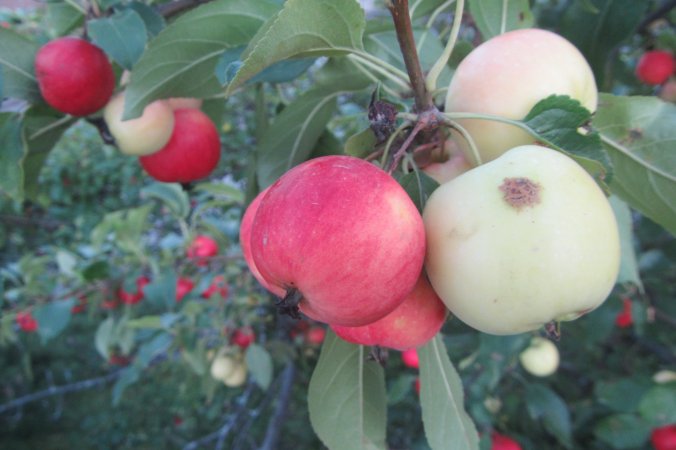
Same branch.
Same tree.
Two distinctly different apples. (Calyx, stem, skin, fruit shape, flavor, etc)
This was one of those WOW moments for me because I don’t ever see this sort of thing. No, the yellow/green apples aren’t unripe versions of the red apples. Nor are they a more pale version of the other. This is something special and when I first saw it, there were three possible scenarios for what this was:
1.) Bud Sport. Not a typo for the epic Jean Claude Van Damme movie. A bud sport it’s basically a chance mutation of a single bud on a tree that produces a different looking fruit. Sometimes this bud turns into a branch that produces apples double the size of the others on the tree. Sometimes a red delicious apple tree produces a branch of black apples…
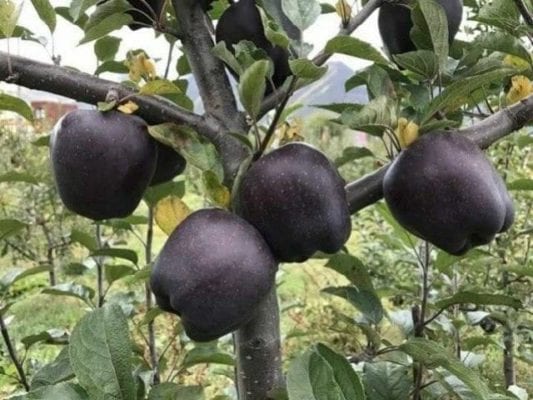
No, I don’t think what Jack found is a bud sport, as two distinctly different kinds of apples are coming out of the same bud. We won’t venture down this rabbit hole, however I do plan to write more about bud sports in the future. They are fascinating!
2.) Top-Grafting. This is one of my favorite methods of grafting because it allows you to graft one or unlimited cultivars of fruit onto an existing tree of the same genera (ish). I made a quick video of how to do this with Bradford Pear:
However, if everything goes correctly, you still wouldn’t end up with a tree producing two different apples from the same bud on a branch.
3.) THE GRAFT-CHIMERA! OMG. I’ve been waiting to find one of these! I had first learned about this crazy concept when reading about the rediscovery of the citrus fruit cultivar ‘Bizzaria’. The gist of the story is this: Back in the 1600s, a Florentine gardener named Pietro Nati discovered a citrus fruit tree that was growing three different fruits. One fruit was the sour orange, which was from the rootstock’s genetics. The next fruit was the citron, which had been grafted onto the sour orange and was of the scion’s genetics. A third fruit was growing from this stem, which appeared to be a complete meld of the two fruits. The scientific community at the time, perplexed, fittingly named this fruit ‘Bizzaria.’ This branch was grafted in gardens all over the place and, amazingly, the chimera held true.
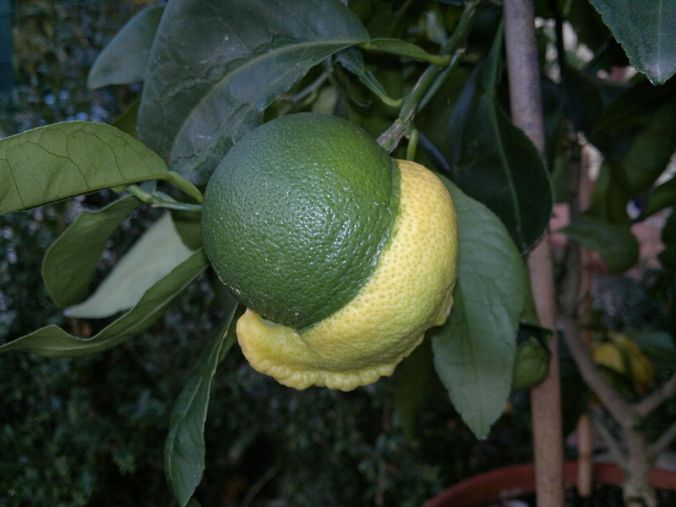
Bizzaria Fruit- half sour orange, half citron
Centuries later, the concept of having 2 or more distinctly different fruits emerging from one stem was revealed to be a graft-chimera, a botanical phenomenon where the cells of the rootstock and the cultivar being grafted get wrapped up together in a single branch and both traits are exhibited. Sometimes, like with the case of Bizzaria, a 50:50 fruit also emerges. How this happens can be boiled down fairly simply thanks to a German botanist named Hans Winkler.
Support my writings and more through the purchase of charcuterie at www.hogtree.com
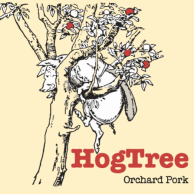
Winkler was fascinated with the idea of graft-chimeras and began to experiment with how this sort of thing could come about and happen more regularly. How could he cause two different cultivars of fruit/vegetables/flowers to come out of the same bud? Instead of using apples for his experimenting, which take years to produce fruit, he used tomatoes and other graft-compatible nightshades (I’ll use eggplant for this essay, though it may not be historically correct) to conduct his experiments because they looked completely different in fruit and leaf.
The experiment goes like this: He grafted a tomato cultivar to an eggplant rootstock and when the graft was well healed and the plant established, he cut the graft union in half so the rootstock/scion union had exposed cut tissue. He watched these cuts callous over and develop adventitious buds (new buds that arise from calloused tissue) grow. If a bud arose from the eggplant portion, it was an eggplant. If it arose from the tomato portion, it was a tomato. If it arose from the graft union, it was a n Eggplato, composed partly of eggplant and partly of tomato. Essentially, two different species present within the same stem!
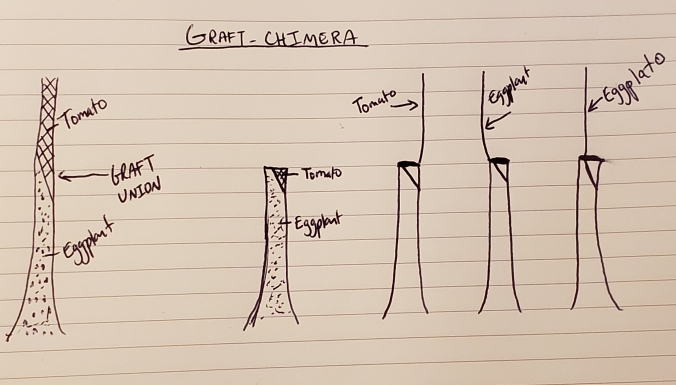 Turns out, this little experiment from Winkler is highly replicable and he was able to show how such branches can arise incidentally from normal grafting methods. The genetics and botanical world should have gone crazy at this time, experimenting with these concepts and producing serious Frankenfruit. But, like many cool experiments uncovered from the last century or more, they never picked up steam.
Turns out, this little experiment from Winkler is highly replicable and he was able to show how such branches can arise incidentally from normal grafting methods. The genetics and botanical world should have gone crazy at this time, experimenting with these concepts and producing serious Frankenfruit. But, like many cool experiments uncovered from the last century or more, they never picked up steam.
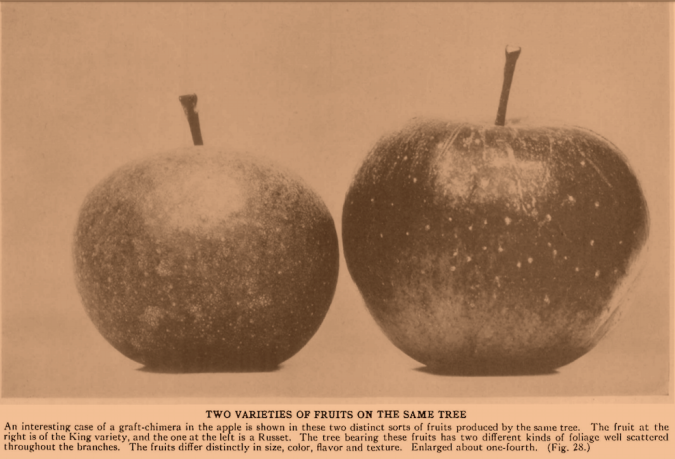
Back to Jack! And apples!
When I asked for more pictures, especially of the trunk, they sent this one over to me: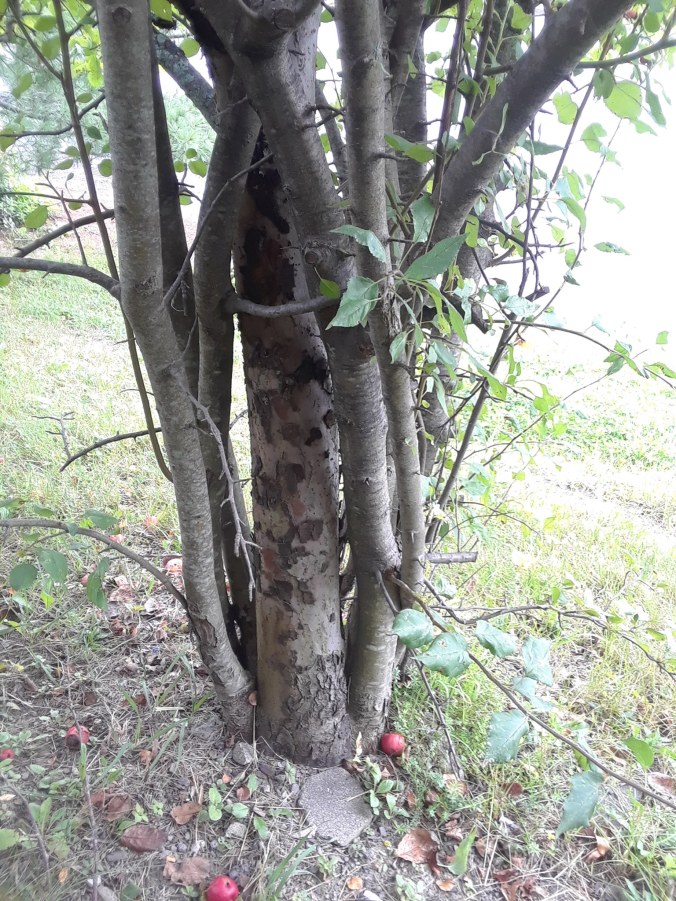
After seeing the picture, I think there are two possible scenarios for this graft-chimera.
1.) The tree’s graft union was buried and suckers came about from the union, producing chimeras.
1.5) The tree was mowed/driven over at the graft union and what came up was the graft-chimera
2.) The tree’s graft union was buried and some low-down injury occurred (weed eater?), causing a deep enough cut around the tree to reveal both rootstock and scion tissue. Up from that came these chimeric shoots.
Regardless, I think this ability to meld two cultivars into a single stem is very cool and somewhat witchy. I definitely want to experiment more with this concept in the future and I don’t know why more hasn’t been done with this concept. Maybe it has and I’m unaware, but I have found that some ornamental cultivars, especially the variegated types, came about as graft-chimeras.
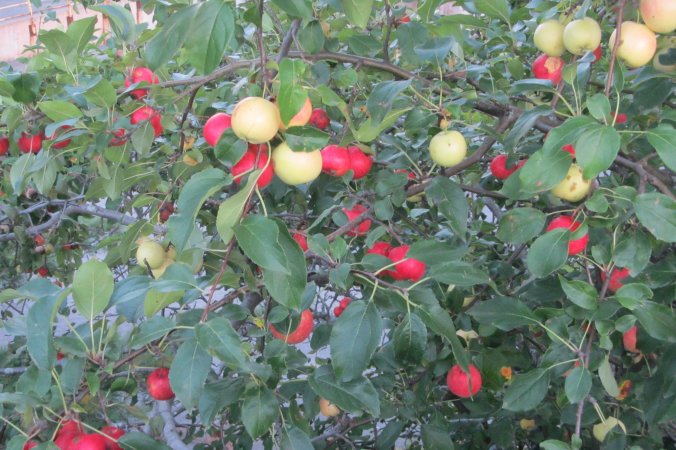
Sidenote: I find it fitting that Winkler coined the term ‘Genome.’ How did he do it? Much like the Bizzaria fruit being half citron and half sour orange, he combined the words ‘Gene’ and ‘Chromosome’ together to get ‘Genome,’ lol.
Resources:
- https://aggie-horticulture.tamu.edu/tisscult/Chimeras/chimeralec/chimeras.html
- http://irrecenvhort.ifas.ufl.edu/plant-prop-glossary/03-genetic-selection/04-genetic-chimera.html
- STOUT, A. B. (1920). A GRAFT-CHIMERA IN THE APPLE. Journal of Heredity, 11(5), 233–237.
- https://www.sciencedirect.com/science/article/pii/S0012160616300902
- https://www.journals.uchicago.edu/doi/pdfplus/10.1086/330463
wow! I love this! Some food for thought for sure. Nature is pretty awesome teacher!
Fascinating! Thank you!
Great read, Eliza. Enjoy your style.
Steve
Wow, this is a game changer! Maybe my mythical mango-avacado could become reality by an amature after all. This idea / technique will need to be tested thoroughly. Thanks for sharing!